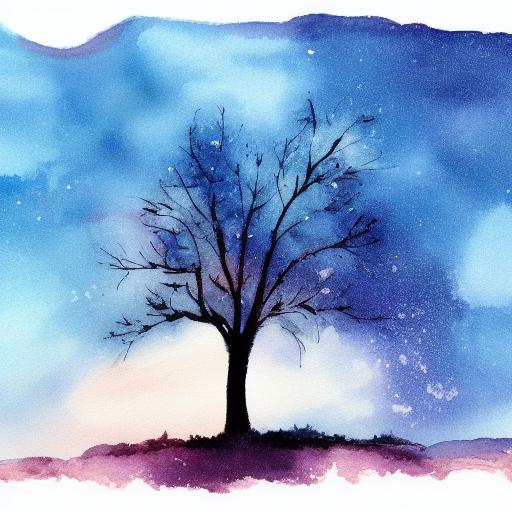Landscape watercolor art
Landscape watercolor art refers to paintings that depict outdoor scenery such as mountains, forests, lakes, and beaches, using watercolor techniques. Watercolor is particularly well-suited for capturing the natural beauty of landscapes due to its transparent quality and ability to create subtle variations in tone and color.
Features of watercolor art
Artists who work in watercolor often use techniques such as washes, glazing, and dry brushing to create texture, depth, and contrast in their landscape paintings. They may also use masking techniques to preserve areas of the paper or to create crisp edges.
Origin of watercolor art
Landscape watercolor art has a long history, dating back to the 18th century, and has been a popular genre among artists ever since. Some notable landscape watercolor artists include J.M.W. Turner, Winslow Homer, and John Singer Sargent. Today, there are many contemporary watercolor artists who continue to push the boundaries of the medium and create stunning landscape paintings.
What is AI-generated art
AI-generated art is a form of art that utilizes artificial intelligence algorithms to produce images in a fast and efficient manner. It offers several benefits over traditional art-making methods, including the ability to experiment with different styles and techniques and the flexibility to create designs that meet specific requirements. Additionally, AI-generated art promotes diversity and inclusivity in the art world by providing a platform for artists from various backgrounds to express their unique experiences and perspectives.
Designers can take advantage of online tools like Visual Paradigm Online to easily incorporate AI-generated art into their designs. By utilizing websites such as Stable Diffusion, Midjourney, or Dalle 2, artists can generate their own AI-generated art and explore the endless creative possibilities that this technology offers.
How to write this prompt?
- “a painting of a tree silhouette in the night sky”: This part of the prompt sets the scene for the image. The AI will understand that it needs to create a painting of a tree silhouette, which will likely be black or dark in color, against a dark night sky. This provides a clear direction for the composition of the image.
- “a watercolor painting inspired by Dwight William Tryon”: This part of the prompt provides a reference point for the style of the painting. Dwight William Tryon was an American painter known for his landscape watercolors, so the AI will likely create an image that has a similar feel. This might include the use of washes and a limited color palette, as well as loose, expressive brushstrokes.
- “shutterstock, conceptual art”: These keywords provide additional context for the image. Shutterstock is a stock image website, so the AI might be influenced by the types of images that are commonly found on the site. Conceptual art is a genre of art that prioritizes the idea or concept behind the artwork, rather than its aesthetic qualities. This might influence the composition of the image or the way in which the tree silhouette is portrayed.
- “tree in a galaxy made of stars”: This part of the prompt provides a specific visual direction for the image. The AI will understand that it needs to create a tree silhouette that appears to be surrounded by stars or situated within a galaxy. This might involve using lighter colors to create a starry background, or incorporating elements like nebulas or constellations.
- “dark and stars in the background, stary night painting”: These keywords reinforce the idea that the image should have a dark, starry background. This might involve creating a gradient of dark blues and purples to suggest the night sky, or using a speckling effect to create the appearance of stars.
Overall, this prompt is very detailed and provides a lot of specific guidance for the AI. By including references to a specific artist, a stock image website, and a genre of art, it helps to create a clear vision for the final image. The individual parts of the prompt work together to influence the composition, style, and overall feel of the image, resulting in a unique and visually interesting watercolor painting of a tree silhouette in the night sky.


